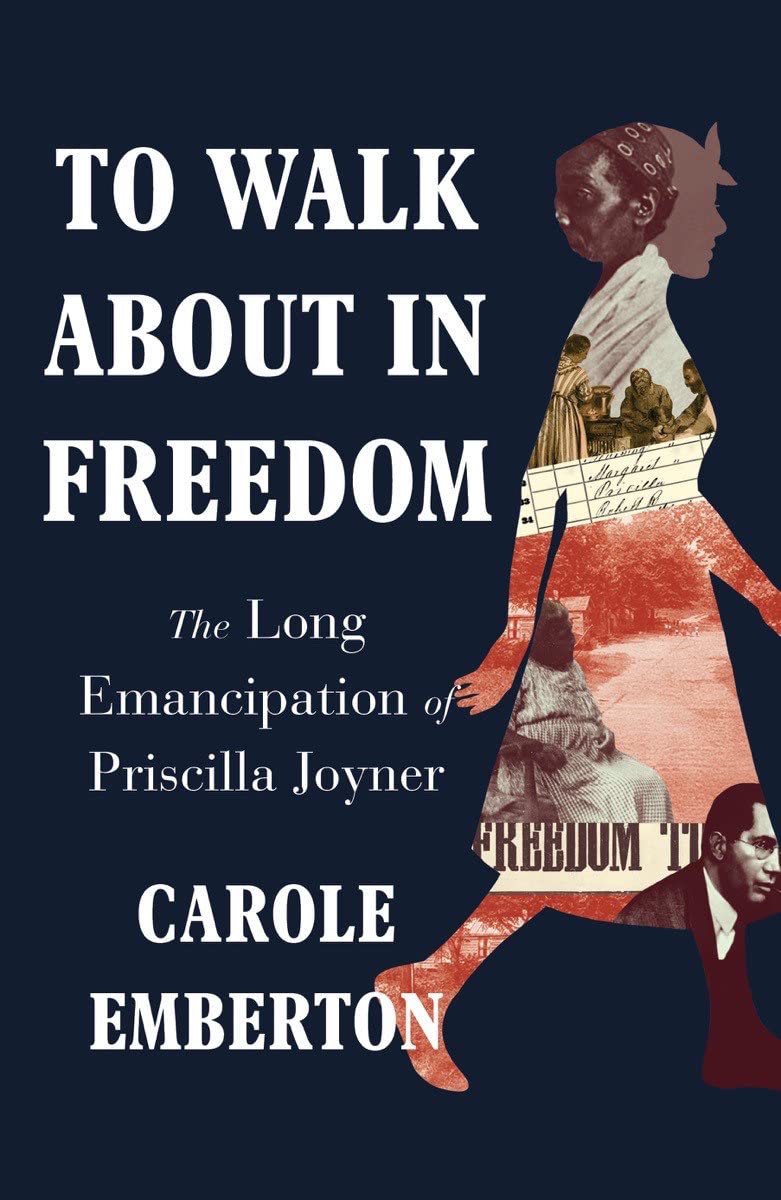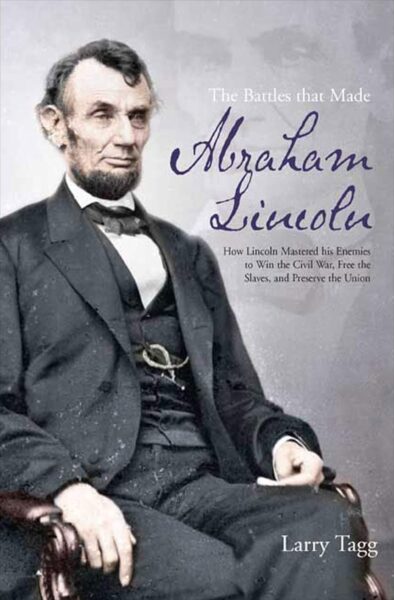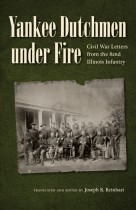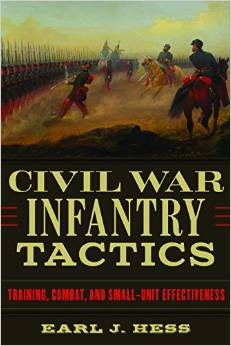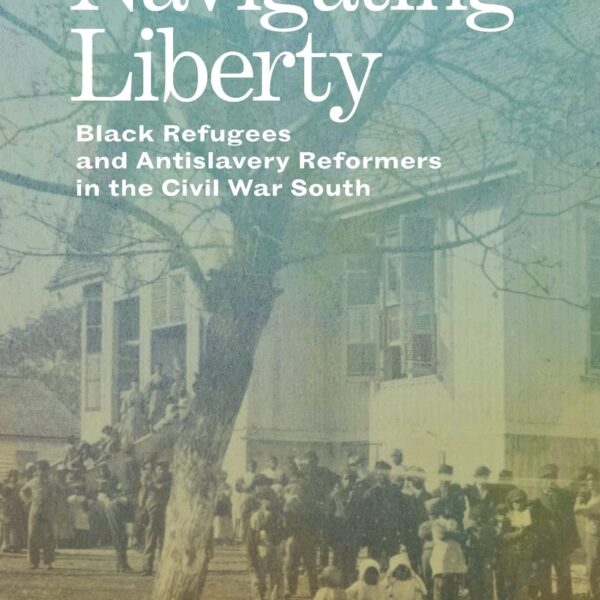In the middle of the Great Depression, the federal government launched an ambitious effort to interview surviving ex-slaves. Employees for the Federal Writers’ Project scoured the South and produced reams of testimony. Civil War scholars, however, have long identified the narratives’ weaknesses as sources, citing the advanced age of interview subjects, the reality that most respondents only experienced slavery as children, the uneven power dynamics between mostly white interviewers and Black subjects in the Jim Crow South, and FWP workers’ favorite pastime of transcribing African American voices into stereotypical dialect.
Historian Carole Emberton’s To Walk About in Freedom is a remarkable microhistory centered around one formerly enslaved woman’s FWP interview. Emberton adds her voice to a growing chorus of scholars who view emancipation as a process rather than a singular moment; demonstrates that freedpeople defined freedom not simply by the legal abolition of slavery, but through their ability to form families and emotional ties; and links renewed scholarly interest in the FWP narratives with another recent trend that emphasizes the importance of telling individual stories.
Born into a slaveholding household in North Carolina in 1858, the book’s subject, Priscilla Joyner, never knew her father and had nagging doubts about the slaveholding mistress who claimed to be her biological mother. That woman, Ann Eliza Joyner, maintained that Priscilla was the product of an extramarital relationship with a Black man during one of her ne’er-do-well husband’s prolonged absences. When Ann Eliza’s husband returned to discover she had given birth to a mixed-race child, the slaveholding mistress struck a deal. She would forgive his unauthorized sale of two of her dowry slaves (who by law remained her property) if he would stay married and acknowledge Priscilla as his daughter.
Priscilla never really bought that story. If Ann Eliza spoke truthfully, Priscilla had been born free. Whatever her real legal status, Emberton argues that Ann Eliza’s decision to separate Priscilla from the local African American community robbed her of a happy childhood. Joyner’s stepfather and white siblings tormented her constantly. Perhaps that was why soon after the war ended, Ann Eliza sent twelve-year-old Priscilla to live in a Black community known as Freedom Hill near Tarboro, North Carolina. There, Priscilla distanced herself from her white family, gained education in freedmen’s schools, and married a Black man, Lewis Joyner. During the 1880s, the Joyners relocated to Suffolk, Virginia, where they raised ten children. Decades later, three Black interviewers working for the FWP recorded Joyner’s remarkable story. But before it hit the presses, the FWP’s state director for Virginia, Lost Cause-enthusiast Eudora Ramsay Richardson, reduced and reworked Joyner’s complicated life into a short, feel-good story about a benevolent mistress taking in an orphaned slave child.
As Emberton tells it, Priscilla Joyner’s full life story affirms that emancipation was a protracted process that for freedpeople was not complete with the legal end of slavery, but continued through the search for the emotional sanctuary long denied them under slavery. In doing so, Emberton joins a growing number of scholars who have begun to write about a “long emancipation,” the notion that emancipation was a decades-long process involving successive generations rather than the work of a single act or individual. By Emberton’s account, that process was only beginning with the legal abolition of slavery. To be sure, Emberton does not dismiss the importance of the new legal protections freedpeople secured in the wake of emancipation. State-recognized marriages, for instance, offered Black families new legal safeguards and social respectability, but to Joyner and other members of what Emberton calls the “charter generation of freedom” (p. xix) who lived the difficult transition from slavery to freedom, emancipation meant the ability to form the loving ties that slaveholders had long tried to prevent. In short, a key contribution of this book is to underscore that the political and legal milestones that dominate history books were not the only—or even the primary—yardsticks by which freedpeople measured their freedom on a day-to-day basis. A law was an abstract, far-off thing. Clasping a loved one’s hand without the fear of forced separation, gardening without an overseer hovering menacingly nearby, Emberton tells us, were more tangible markers of freedom to the men and women who had just lived through slavery.
To Walk About in Freedom not only sheds new light on what freedom meant to those exiting slavery, but also links two parallel but heretofore unconnected trends in the field: first, the recent revival of scholarly interest in FWP narratives, and second, the privileging of individual stories over broad patterns. Over the past two decades, scholars such as Thavolia Glymph and Edward Baptist have persuasively employed FWP narratives in their work. But Emberton consciously avoids the temptation to use narratives like Joyner’s to construct a “composite autobiography” (p. 206) of freedpeople. Instead, she takes a page from microhistories such as Adam Rothman’s Beyond Freedom’s Reach (2015) and Tiya Miles’s All That She Carried (2021) that shift away from broader trends to tell an individual story. Emberton started with the original transcript of Joyner’s FWP interview and borrowed techniques from the new history of emotions, leaning into the speculative to imagine the personal relationships that defined Joyner’s transition from slavery to freedom.
Emberton does not claim that Joyner’s story is representative, but she does insist it is important in its own right. The result is an elegantly written book that grapples with the lingering traumas of slavery while also exploring what it was like to experience the small joys of freedom. For Joyner, uncertainty about her father’s identity and a complicated relationship with her presumed birth mother haunted her all her life. Despite the injustices that legal abolition could never remedy, freedpeople like Joyner still found joy and meaning in their everyday lives.
Cooper Wingert is a doctoral student in the Department of History at Georgetown. The author of several books, his current research explores the fugitive slave crisis and the coming of the Civil War.
